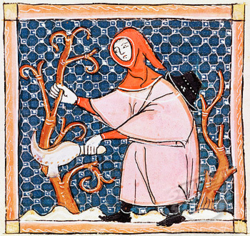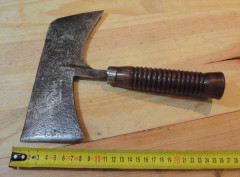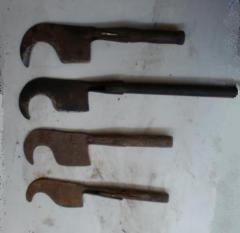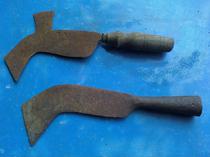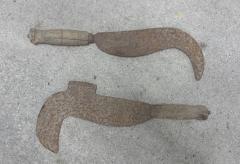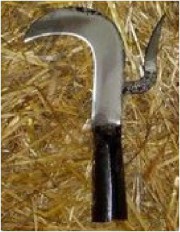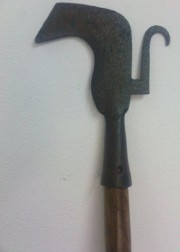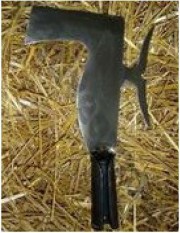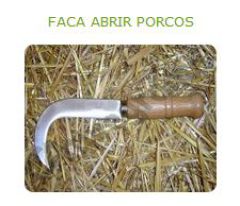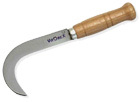Podão, foice e roçadeira
The billhook is still common in Portugal. As this country has a continuing rural tradition of small farms, a wide range of shapes are still being made. Those with a tang handle are generally known as podão, while the terms foice and roçadiera are used for tools fitted with a socketed handle.
This type, often called a foice, with its deeply curved blade is peculiar to Portugal and the adjacent part of north west of Spain. It can be used in the same way as the podão above, as an axe for cutting thick sections, and by being drawn towards the user for pruning thin shoots, as well as onto a block for splitting kindling wood (without the point digging into the block). These are from Braga in north west Portugal.
When I was first looking at Portuguese tools, some years ago, I was told that a podão vinha that I bought was used for butchering pigs. It was obviously a vineyard tool, so I did not follow the thread. When preparing the PDF catalogue file (see below) there was one tool shown twice. Once as a small pruning hook (podão poda), but also as a knife for opening pigs (faca abrir porcos). It would appear my informant was correct, the billhooks of Portugal are multi-purpose, serving equally well as a butcher's tool as a vineyard pruning tool. This image is from the online catalogue of Cativegrama.
This one, also used for butchering pigs (faca de abrir porcos), is from the online catalogue of Vitorex.
A new PDF file for Cativegrama has been added to the Portugese catalogues, here:
(One of the problems with a largish web-site is that I forget what I have previously done, and start to duplicate sections - more images of Portuguese billhooks can be seen here:)
